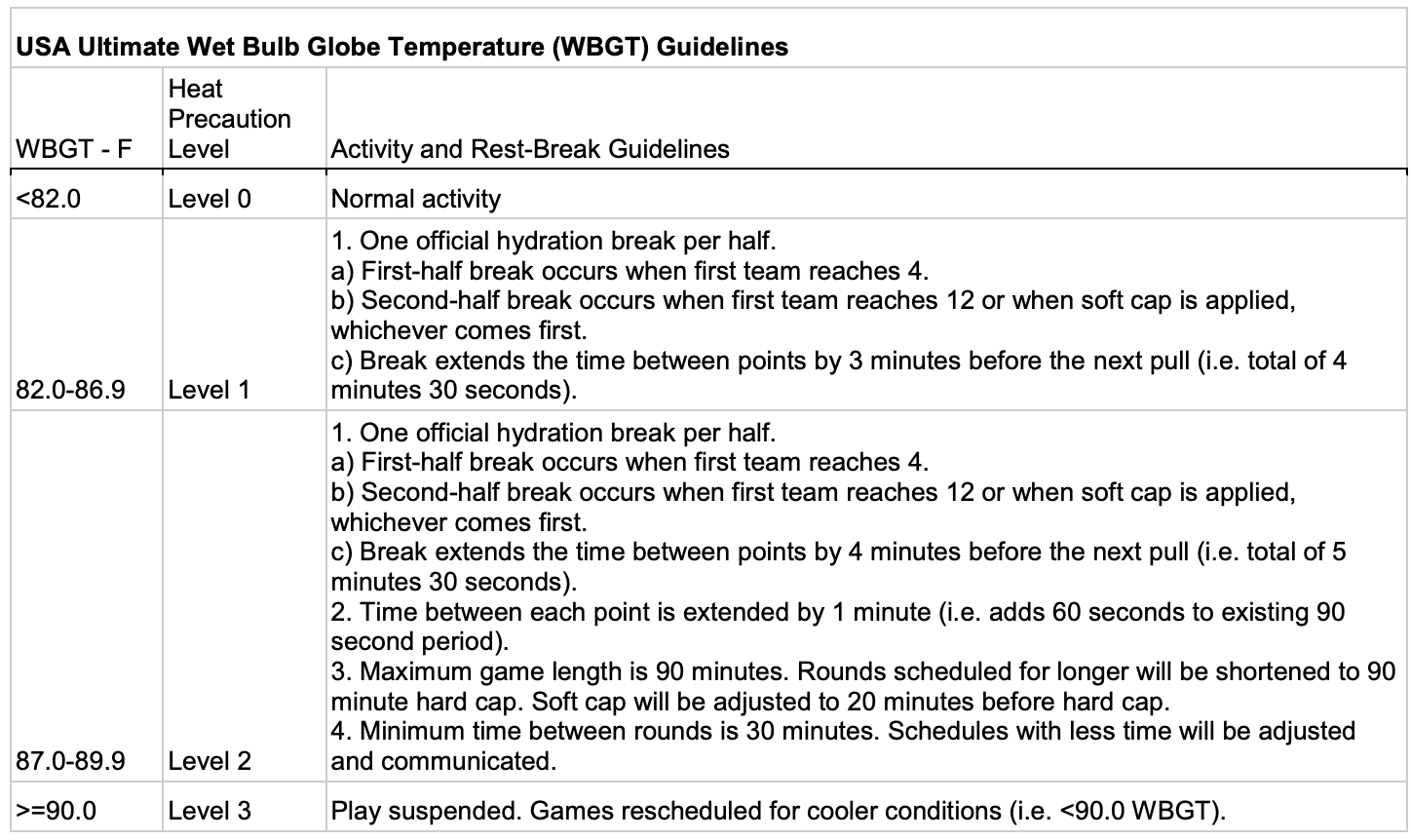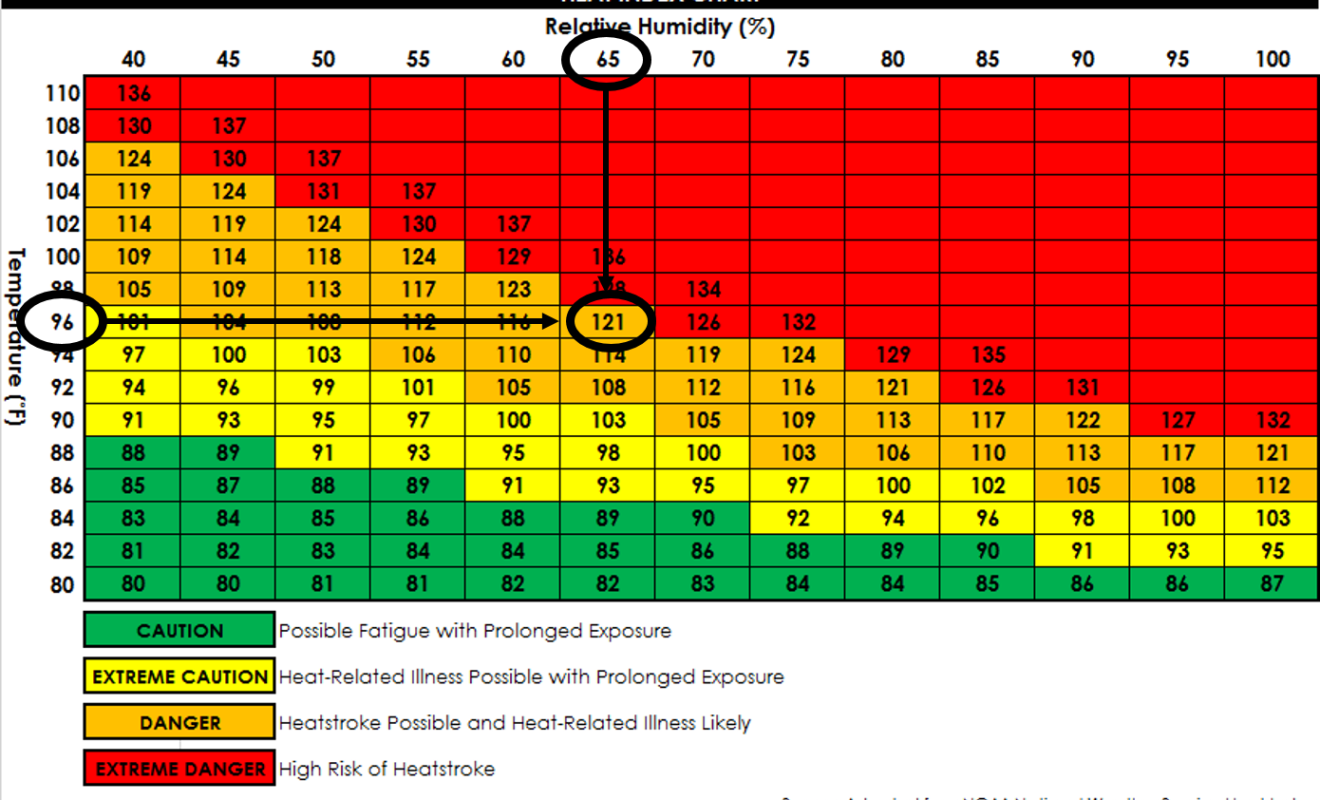Intro
In a previous blog post, I discussed a few rules that I think should be changed. But there is one that I believe is worse than any of those, probably even worse than all of them combined. As opposed to the other rules that I would change, which I see as oversights, outdated relics, or places where improvement could be had, I view this rule as a mistake by USAU and a true negative on the game. This rule, the bad rule to rule all bad rules, is heat timeouts.
Here's the current rule, taken directly from the USAU Medical and Inclement Weather Plan:

History
USAU didn't have heat timeouts until a few years ago. In 2019, college nationals was set to be hosted in Texas and a small pocket of the frisbee community was fearful about the danger of heat. This group raised enough of an outcry on Twitter to successfully cause USAU to change their policy around heat.
I played in that nationals. It was a hot tournament, much like many other hot tournaments. Yet for some reason we had to sit through a bunch of extended breaks between points. Just like other hot tournaments, we didn't have significant incidents of hot weather making the game particularly unsafe.
So began the misguided story of heat timeouts. Ever since then, the heat timeout rules (albeit sometimes loosely enforced) have remained on the books.
Heat timeout requirements are too stringent
The most glaring issue with heat timeouts are that they are ridiculously stringent. Of course, heat restrictions make sense at some level - if it is 130 degrees out, you probably shouldn't be playing an intense sport. But the USAU heat guidelines are laughable on their face.
USAU's guidelines use Wet Bulb Globe Temperature. Here's a graphic showing how real temperature and humidity map to WBGT.

Above 82 degrees WBGT, which is anywhere from 75 to 82 degrees Farenheit (depending on humidity), extra breaks are required. Above 90 degrees WBGT (82-90 F), play must be suspended. In New York City, where I play, the average July and August daily maximum temperature (which occurs during midday, when we have our weekend practices) is 84 degrees with 50-75 percent humidity. That puts us at WBGT of just about 90 degrees, enough to require play to be cancelled. Under the existing USAU guidelines, these temperatures are too dangerous to play a single point of ultimate in. Again, that's the average summer day in New York - and there are many hotter cities around the US. I can't remember ever cancelling practice for heat, nor do I remember any other club teams doing so.
Heat timeouts don't solve any problem
The fundamental assumption behind heat timeouts is that adding increased breaks reduces the likelihood of heat-induced injury. In my view, this is flawed for two reasons.
1. The long stretches of exertion that cause heat injury occur during points, not between points. A marathon point is what is more likely to cause heat injury, and heat timeouts do nothing to address that. We already have significant breaks between each point.
2. Teams respond to heat timeouts by playing tighter lines. With heat timeouts or not, top players on any competitive team will play up to their fitness limit in any important game - heat timeouts just mean that they may do that with more points and more rest rather than fewer points and less rest. Either way, the maximal strain on the top players is the same.
Heat timeouts aren't used by other leagues
Heat timeouts aren't used in this manner by the AUDL, WFDF, PUL, WUL, or any other ultimate league that I'm aware of. They also weren't used by USAU until 2019. I can't remember any high-profile cases of any games in these other leagues being unsafe due to heat. Heat timeouts weren't introduced to solve a problem - they were introduced in misguided anticipation of a problem.
Heat timeouts detract from the game
All of these issues with heat timeouts might be acceptable if they had no effect on the game. But heat timeouts do detract from ultimate in the worst way possible.
Heat timeouts don't add any time to the game's time-cap, so they shorten the amount of time we spend playing. Of all the bad rules that affect the game we all love there is nothing worse than fundamentally destroying it by disallowing the players from playing. For all the annoyances that other rules cause on the field, none of them do something so heinous as to force both teams to sit on the sidelines.
Conclusion
Heat timeouts are a waste and a mistake: their ridiculously stringent requirements do nothing to make the game safer, which is probably why they aren't used in leagues outside of USAU. What's worse is they meaningfully detract from the sport we all love.
Heat timeouts add nothing to the game and instead essentially detract from it. It's time to get rid of them.